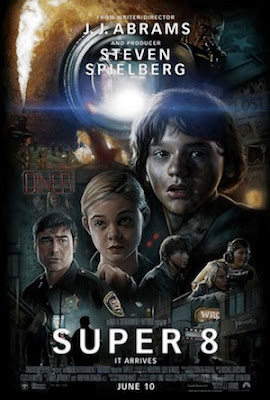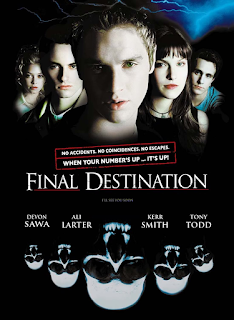The Blair Witch Project
Introduction
The blogpost this week for us is to find out the feminist
film theory elements that could be found in the
movie The Blair Witch Project, which is a documentary film written and directed
by Daniel Myrick and Eduardo Sánchez in year 1999. By that, the goal of this
post for me is to study about this movie, watch it, and get to know about what
theory is used in it which showed the semantic and syntactic approach to genres
for the film. Along my study of this film, by accomplishing my goal, I would
also have an attempt to determine the documentary film theory elements that would be found in film by stating it
out in the analysis section of my post.
Theory Discussion
Poetic
“The poetic mode is particularly adept at opening up the
possibility of alternative forms of knowledge to the straightforward transfer
of information, the prosecution of a particular argument or point of view, or
the presentation of reasoned propositions about problems in need of solution.
This mode stresses mode, tone, and affect much more than displays of knowledge
or acts of persuasion. The rhetorical element remains underdeveloped.” (Bill
Nichols, Introduction to Documentary, pp 103). Began in the modernism era, it
is a way of representing reality via series of fragmented visuals and
subjective impressions, incoherent acts and loose associations. Films of this
mode breaks up time and space into multiple perspectives, denying coherence and
accepting the unconscious, this mode stresses on fragmentation and chooses
ambiguity as a prominent feature. For an example, a fighting scene that lasts
for 10 minutes. It shows reality in a different way or in other words, in a
more stylistic way.
Expository
“Voice-of-God commentary and poetic perspectives sought to
disclose information about the historical world itself and to see that world
afresh, even if these views came to seem romantic and didactic.” (Bill Nichols,
Representing Reality, pp 32-3). A disembodied and authoritative voiceover that
is combined with a series of imageries, all aimed at being descriptive and
informative. Films of this mode address audience directly, providing visible
information in the imagery and unseen information in the voiceover. It is a
classic mode and is now common in TV documentaries. Overall effect of this mode
is objectivity, a direct and transparent representation.
Observational
An observational mode of representation allowed the
filmmaker to record unobtrusively what people did when they were not explicitly
addressing the camera…But the observational mode limited the filmmaker to the
present moment and required a disciplined detachment from the events
themselves. (Bill Nichols, Representing Reality, pp 33). There is no apparent
intervention by the filmmaker in the filmed events. For an instance, there is
no voice-of-god voiceover, no intertitles and no interviews. Films of this mode
observe and record as the events unfold in real time, resulting in long takes
and sound is recorded directly, establishing an intimate relationship with and
a sense of the environment without manipulating and distorting the event, thus
there’re no dramatic nor unusual moments; making films of this mode
significantly known as direct cinema. Overall effect is a neutral and
non-judgemental appeal.
Interactive
“Interactive documentary arose from the desire to make the
filmmaker’s perspective more evident. Interview styles and interventionist
tactics arose, allowing the filmmaker to participate more actively in present
events.” (Bill Nichols, Representing Reality, pp 32-3). The filmmaker’s presence is known to the
audience by ways of the filmmaker interacting with the filmed interviewees
Films of this mode allow the filmmaker’s presence to be felt by the audience
via interviews, posing questions on/off screen as a mediator for interviewees
and audience. His power over the documentary is clearly shown, via questions
posed as well as editing. The overall effect of this mode exposes the process by
which the documentary is made, instead of hiding it like the previous modes.
Objectivity is very much restrained.
Reflexive
“Reflexive documentary arose from a desire to make the
conventions of representations themselves more apparent and to challenge the impression
of reality which the other three modes normally conveyed unproblematic.” (Bill
Nichols, Representing Reality, pp 32-3). The filmmaker exposes the techniques
employed for representation, challenging the documentary’s means of revealing
the truth Films of this mode focuses on film properties and filmmaking process,
reminding and informing audience, besides the represented issue, that they are
also watching a film that is attempting to represent reality. Overall effect of
this mode is lack of objectivity which does not necessarily compromise the
impact of documentary but instead, provide more valuable views of the issue at
hand.
Performative
“Performative doc. (1980s – 90s): stress subjective aspects
of a classically objective discourse. - Possible limitations: loss of
referential emphasis may relegate such films to the avant-garde; ‘excessive’
use of style.” Bill Nichols, Blurred Boundaries, pp 95 direct reference to the
issue at hand is marginalized while poetic & expressive aspects of film are
emphasized. The world is not captured like other modes traditionally do but
instead represent it indirectly Films of this mode evoke mood/atmosphere found
in fiction films, representing of subject matter stylistically, evocative and
expressively. Overall effect of this mode is lack of objectivity, aimed at
encouraging audience to experience and feel the events while making audience
question the integrity and accuracy of the filmed events
Synopsis
This is a film about three film students, Heather Donahue,
Joshua Leonard, Michael C. Williams are trying to film a documentary film about
a local legend, The Blair Witch. In order to film this documentary, they had to
travel to Burkittsville, Maryland and go into the woods on a two days hike to
find the witch. As the sun goes down, they realise that they had lost in the
woods. After that, they have gone missing one by one in the woods. One year
later, the students' film and video were found in the woods. All the footage
was combined and made into this film.
Analysis
First is the performative mode where it trigger the
emotional of the audiences toward the film. It aimed to let audiences to feel
the reality of the film. For example, when Heather, Mike and Josh were lost in
the woods , they were very angry and frustrated toward Heather since she is the
one leading the way in the woods. But she also felt guilty and started to cry
in the film. This can touch the emotion of the audiences. Next mode is the
interactive mode. This mode helps to make the presence of the filmmaker can be
felt in the film. This mode is applied by using interviewing. We can see the
filmmakers in front the screen interviewing those interviewees. By using this
way, filmmakers and the audiences can be actively participate in it. For
example, in this film, they do the interview with the people who live in
Marybrown. When one of the woman was describing the blair witch, Heather is the
person throwing the ideas to the women when she is answering the questions.
Besides that, this movie is also a reflexive documentary film. For example, we
can hear the sound of them running and panting when they heard little children
playing outside the tent. The camera was unstable and we can see the three
students shooting each other with their cameras. This reminds audience that
they are watching a film that represents reality, but whether it is truthful or
not, it is up to the audience to decide.
Another scene is where you can see Heather shooting herself while
talking and crying, it does not hide the fact that she is filming herself.
Conclusion
Overall I think this film is quite worth it for me to watch
because I get to learn something from the film and I am able to know there are
quite variety of films such as Blair Witch Project that existing out there.



Comments
Post a Comment